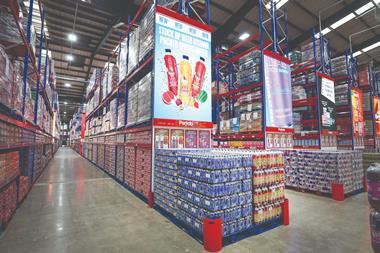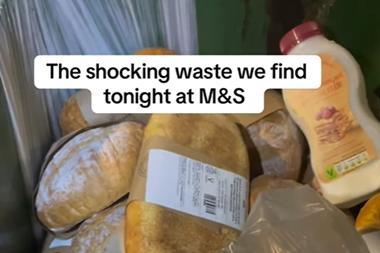The countdown to Christmas is on.
In just a few weeks’ time, millions of children will rush downstairs on Christmas Day and tear apart masses of wrapping paper to get a first peek at their new toys. For parents, themselves not immune to this euphoric feeling when they get the latest tech and gadgets, those moments of joy can be some of their most cherished family memories.
But there is one, often overlooked, message on Christmas presents that has the potential to massively dampen the festive spirit: ‘batteries not included’.
Every year, the demand for batteries increases exponentially in the run-up to 25 December. In fact, the average UK household buys 30 batteries every Christmas, according to data from Statista, with purchases often peaking as late as 24 December.
“The fourth quarter of the year is always the boom period for any battery supplier as you’ve got Black Friday in November and then people are preparing themselves for Christmas, which we always associate with larger pack sizes to power toys and similar products,” Hanifa Choudhury, managing director of VARTA Consumer Batteries UK, says.
The battery fixture can sometimes be a daunting place for consumers though. Faced with minimal practical information and a plethora of different brands and product types to choose from, shoppers tend to spend a limited amount of time in front of the fixture and, instead, make decisions based on impulse.
“Some consumers may not be bothered about the quality as they are price-driven and, when they need batteries, they just buy the cheapest once,” Mona Chan, VARTA’s marketing manager, claims.
“Or for consumers who are less price-conscious, they’d assume the battery with a higher price point has better quality, but that’s not always the case.”
Consumers’ growing price-sensitivity is likely to be a major trend this year given the economic uncertainty of the Covid-19 pandemic - and they will no doubt be looking for a bargain anywhere they can.
With batteries, this may come in the guise of larger packs, traditional promotional offers or a focus on own-brand products. However, thrifty shoppers at this time of year could also benefit from increasing the performance of their batteries by buying the optimal energy solutions for specific devices.
Take wall clocks or remote controls, for example. These are typically low-draining devices which use small amounts of energy over a long period of time, and are potentially not best suited to being powered by expensive, premium batteries. Battery-operated toys or flashlights, on the other hand, are often power-hungry devices that run out of battery quickly and require consistent and powerful energy.
In this instance, cross-merchandising batteries near to battery-operated items based on their level of energy consumption may be one way retailers can help consumers make informed decisions.
Choosing the most efficient batteries for specific devices can not only save consumers time and money, it is arguably also good for the environment, too, as it reduces the unnecessary waste of short-life batteries.
Not all batteries are created equal
Demand for batteries this Christmas looks set to be higher than ever. A study by VARTA found that nearly half of all battery-operated toys on the ‘Top Toys for Christmas’ lists do not include any batteries. Nearly one-third require five batteries or more and some even require up to 14 in total.
And Christmas 2020 looks set to cap off a big year for the category, which has seen a surge in usage and sales in general due to the Covid-19 pandemic and subsequent lockdown measures.
Indeed, The Grocer’s latest batteries category report found that the market gained nearly £10m during the first lockdown after more people found themselves working at home or using battery-operated domestic gadgets to stave off boredom. This category growth was accompanied by a 7.4% increase in volumes in the 12 weeks to 12 July 2020, with alkaline cells outpacing the market with a 21.7% growth in unit sales.
Yet while batteries have been front of mind for consumers more than ever this year, research shows that 62% of parents forget to buy them when needed and that they are the single-most forgotten item on the festive shopping list.
This last-minute panic buying can result in many shoppers making ill-informed decisions and purchasing the wrong battery for the wrong device. But there may be a way to improve the customer journey.

This is why VARTA has created a colour code for its packaging and uses device icons to help educate shoppers to choose the most optimal energy solutions for their devices. These are split into three different categories, based on whether they are best for low energy consumption (yellow packaging), power-hungry devices (blue packaging) or high-tech devices (red packaging).
“It’s about buying the right battery for the right device,” Choudhury explains.
“By having the colour coordination and device icons, it helps support the customer’s shopping journey and purchasing decisions so that they spend the right money for the right device.”
So, if consumers are looking for bargains everywhere this year, how can retailers help with their battery range? Choudhury believes retailers should take learnings from VARTA’s approach to packaging. The secret, he concludes, lies in simplicity.
“I think the battery ranges at a lot of big retailers offer too many products, which confuses the consumer’s shopping journey as they don’t have much time to choose a battery,” he adds.
“Simplifying the fixture down to fewer product ranges could help do this.”
With the festive season rapidly approaching after a difficult year, families will be looking to make this Christmas a really special event. Will your battery range help bring a bit of Christmas cheer?





















